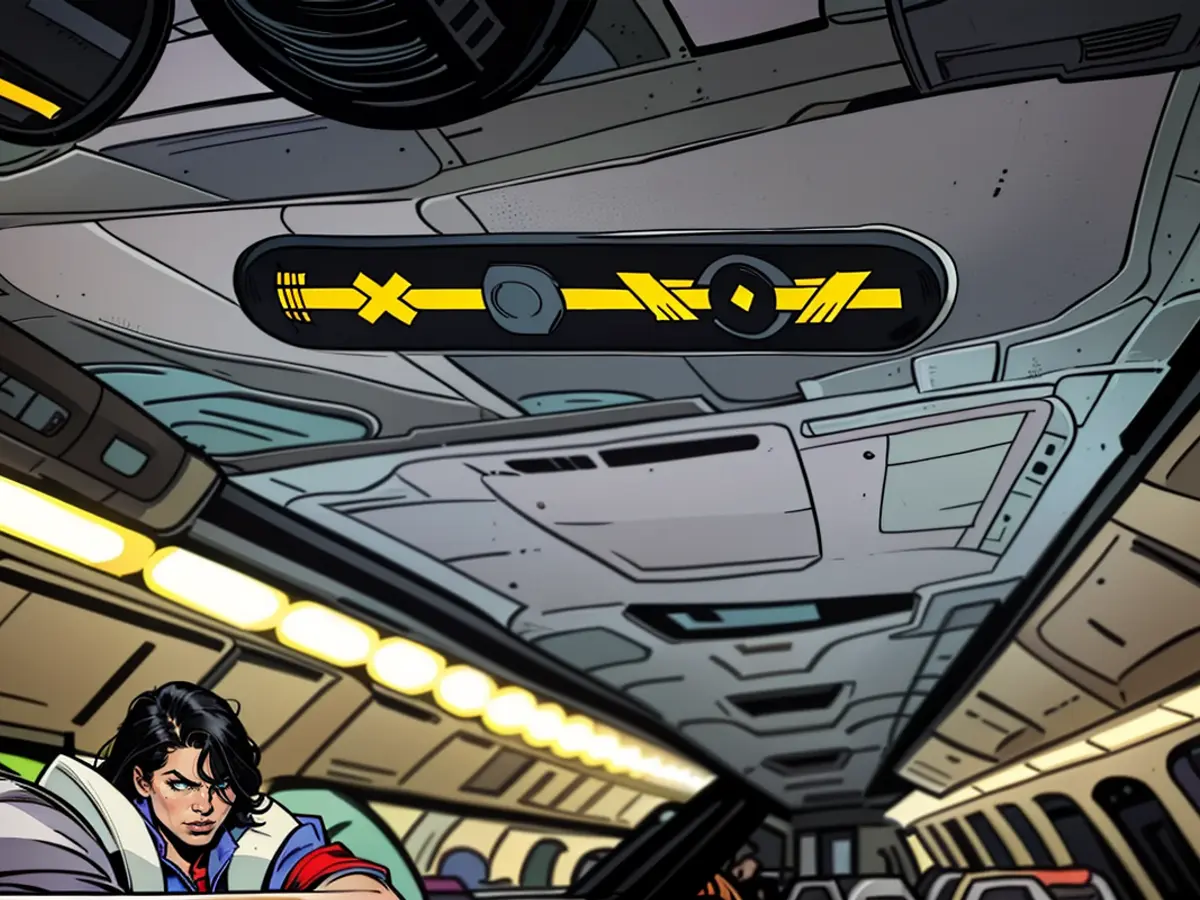
Opinion: I’m a flight attendant. Keep your #@$%&! seat belt on
I’ve spent a lot of time telling them that I wouldn’t be a flight attendant if I felt flying were unsafe. Then I remind them to keep their seat belts fastened, even when the sign is not on.
Yet even with the recent spate of shocking news stories connected to turbulence, I’m still surprised to see so many unbuckled belts when I walk down the aisle.
On a commuter flight last month, while I was strapped to my jump seat, the airplane I was on suddenly dropped out of nowhere. Later I learned we were over the Rocky Mountains, and I was told this is normal — even though I’d never experienced such a drastic drop in my almost three decades of flying.
I watched a handful of people struggle to get back to their row. A mother with an infant strapped to her chest looked at me as she practically crawled back to her seat.
This was a few days after the Singapore Airlines incident, so I was somewhat amazed by the number of people who were standing in the cabin stretching their legs or visiting other passengers when it happened.
Back injuries for life
Is turbulence happening more often? I don’t know, but it does seem to me like we’re seeing more extreme cases in the news and an increased number of flight attendants and passengers getting injured during these incidents.
Lately I’ve noticed flight attendants are quicker to stop the service when we begin to experience light turbulence. On a Facebook work page, one flight attendant wrote that they keep a glass of water on the counter and if the water is sloshing back and forth they aren’t going into the aisle to do the service, check seat belts or answer call lights.
It’s not hard to see why. When I shared on social media that I was writing an article on turbulence, several ex-crew members had stories about injuries from turbulence ending their flying careers. Some have been left with back injuries for life.
I can always tell when I’m working with a flight attendant who has been injured in turbulence as they’re the first to sit down and buckle up as soon as it gets bumpy.
Types of turbulence
Not all turbulence is created equal. There are four types: light, moderate, severe and extreme. Light turbulence causes a slight, rapid, somewhat rhythmic bumpiness without appreciable changes in altitude or attitude. It’s the kind that rocks babies to sleep (and maybe a few overworked flight attendants). The seat belt sign may come on, but flight attendants are still able to conduct the food service with little to no difficulty.
Moderate turbulence is a little more intense. It causes rapid bumps or jolts without changes in aircraft altitude. Passengers will feel the strain of their seats. Unsecured objects in the galley may dislodge. Conducting a food service or checking for seat belt compliance is difficult.
Severe turbulence causes large or abrupt changes in altitude. The aircraft may feel momentarily out of control. Passengers are forced violently against their seats. Walking is impossible. If flight attendants haven’t strapped into their seats already, we might not be able to do so, and we’ll have to grab the nearest available passenger seat. If there’s not one open, we’ll sit on a passenger — anyone will do. Make sure to hold us tightly.
Extreme turbulence rarely happens, but when it does it will violently toss an aircraft about, making it hard to control. Structural damage is possible. There are probably a few nervous fliers out there who want to know just how rare extreme turbulence really is. I’ll put it to you this way: One pilot I know has never experienced it in his 26 years working for a major US carrier. In my entire career, I have yet to experience it.
That said, one flight from New York to Los Angeles became so bumpy on descent that I had to hold on to a coworker who couldn’t make it to her jump seat. A beverage cart fell over in the galley. Soda, coffee cups, napkins and sugar spilled all over the floor. When it was over, the galley looked like a tornado had ripped through it. I had my arms wrapped so tightly around my fellow flight attendant’s waist that by the time we finally touched ground I could barely release my grip on her. My fingers were stiff and my colleague was bruised.
Where you sit matters
During turbulence, there’s such a difference between the front and the back of the aircraft that I’ve had to call a few pilots to let them know they need to turn the seat belt sign on. We’re rocking and rolling in the back, liquids spilling all over the place, and the pilots sometimes have no idea.
Without the seat belt sign illuminated, I can’t suggest to Mom and Dad that it might be a good idea to pick their sleeping baby up off the floor without completely offending them. I’m always amazed by the number of parents who are reluctant to sit a child up and strap them in for fear of waking them up when the seat belt sign comes on.
What’s worse are passengers who decide to stand up and get into overhead bins that are full of heavy luggage as soon as the seat belt sign turns on. Now, instead of just putting themselves at risk, they’ve included whoever else is seated nearby.
It’s because of this kind of behavior that one captain I know seldom turns the sign off. He claims he doesn’t always know when it’s going to be choppy, and he believes it’s too crowded in the aisles to keep it off.
Another thing. Why so many passengers order hot beverages when it’s bumpy is beyond me. I’m not taking it back if the turbulence gets worse.
Buckle up, folks!
Reminder: the plane drops during turbulence — as in an airplane lands on your head when you aren’t buckled in — so keep your belt buckled, and stay buckled up, even when the seat belt light is off. Even a loosely fastened belt will keep you from hitting your head on the overhead bins.
If you’re a fearful flier and have anxiety, let a flight attendant know, and we’ll go out of our way to check on you if things get bumpy. Apps like MyRadar can also demystify what’s in the sky ahead. Lack of a sense of control is what most fearful fliers dread.
And once again, Ladies and Gentlemen, a reminder from your flight attendant: Keep your #@$%&! seat belt on. Thank you. Have a nice day.
Despite the assurance from pilots and the occasional lack of turbulence signs, I often encounter passengers not wearing their seat belts. This situation becomes especially concerning during discussions about the increase in severe turbulence incidents and resulting injuries to flight attendants and passengers.
Consequently, flight attendants have started adapting new protocols, such as stopping food services and even remaining seated during light turbulence, to ensure everyone's safety. The need to prioritize safety in all aspects of air travel is crucial, given the potential risks associated with turbulence.







